Table of contents
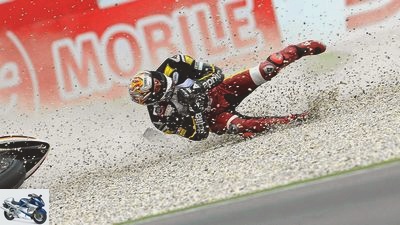
2snap
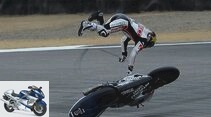
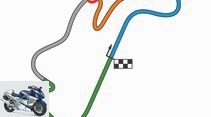
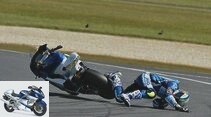
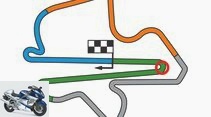
22nd pictures
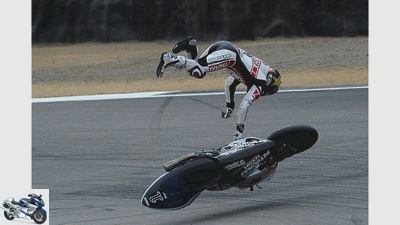
2snap
1/22
Last season there were 863 falls in all three GP classes. This is the lowest value since 2010 – but it still means a lot of pain and shattered carbon. Almost a fifth of these accidents were concentrated in just ten corners, for a total of 272 corners.
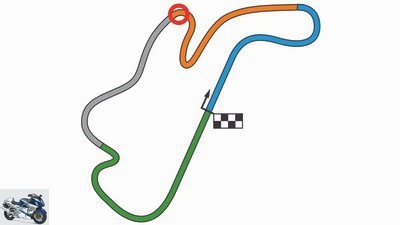
BILLION
2/22
5th place is occupied by the Phillip Island circuit. “It is reminiscent of Turn 3 in Laguna Seca, because there you can also take the hairpin and then you have to turn to the other side. I never had a real problem with that, but it’s one of those bends that you drive into and think in the middle of the bend: I could go a good ten km / h faster here, what am I dawdling? But that doesn’t work. The way the weight is on the bike, anyone who tries will be on their face.”
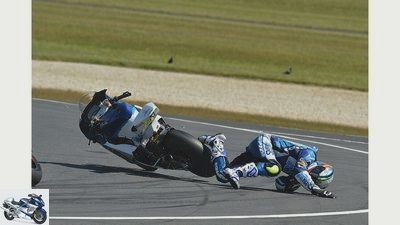
2snap
3/22
Julian Simon crashed on Turn 6 in Australia in 2012.
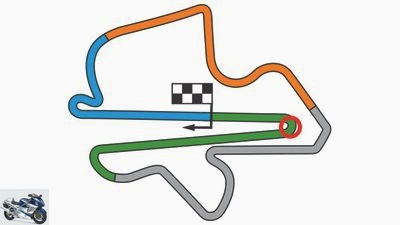
BILLION
4/22
4th place was taken by the Sepang race track. “A flat curve with a few waves and one of these, where you arrive at the speed of light, squeeze everything out of the brake into the hairpin, want to go through as fast as possible and take as much momentum as possible onto the home straight. Everything often a little bit at a time.”
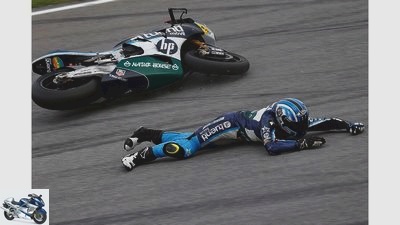
2snap
5/22
Axel Pons is good for a fall anywhere (Sepang 2012).
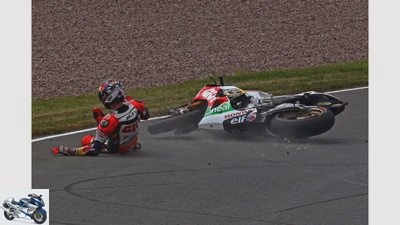
2snap
6/22
Stefan Bradl in 2013 exactly in the said curve. (Sachsenring 2013)
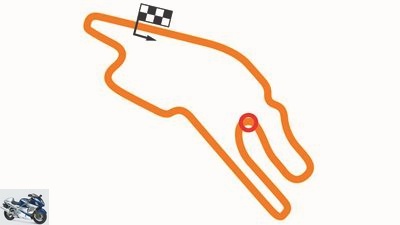
BILLION
7/22
The race track in Le Mans took second place. “Cold tires are also to blame here. At Le Mans you put pressure on the tires in right-hand corners, but the really treacherous corners are tight little links. Turn 7 feels like being on ice skates. Even after ten laps you still have such a skater feeling as if it just never stops.”
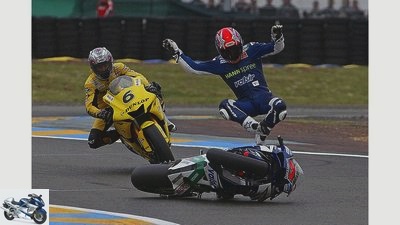
2snap
8/22
Toni Elias 2007 with top marks in Le Mans.
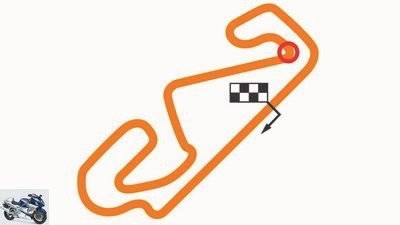
BILLION
9/22
The most dangerous corner is Turn 10 in Catalunya. “A strange curve. I think the Formula 1 guys rubbed metal into the asphalt with their underbody. It really shines there. When it rains, it’s worse. Warning: you get on it and it’s like ice. The curve itself is a little too high, but it hangs where you brake. So the weight distribution on the bike is a bit strange. You think you can slow down a lot, but the balance has to be right all the time. If it is not correct, the front wheel will slip – tremendously.”
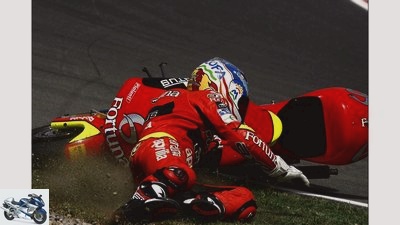
2snap
10/22
Alex Debon went down with the 250cc in 2005.
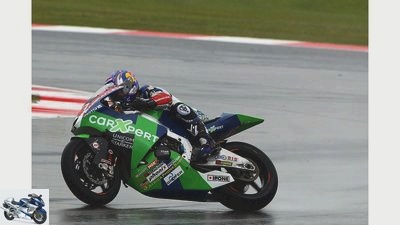
2snap
11/22
Kenan Sofuoglu at Moto2 at Silverstone.
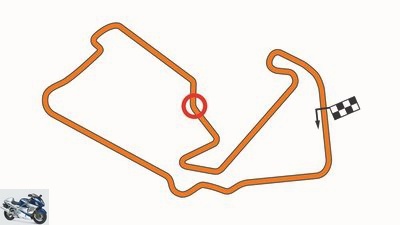
BILLION
12/22
The 6th place in the toughest corners is occupied by the Silverstone race track. “Another cold tire corner. At Silverstone you build up a lot of pressure in the right-hand corners, so in left-hand corners you have that ice-skating feeling again. Farm is also very fast, you hammer it right through. Most of the falls come from the rear wheel erupting, nice with highsider on the inside. From my experience at the point it comes from the cold flank, you give in and it wants to throw you off immediately.”
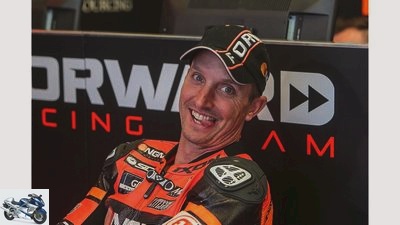
2snap
13/22
MotoGP veteran Colin Edwards analyzes the most toxic corners of the Grand Prix circuits.
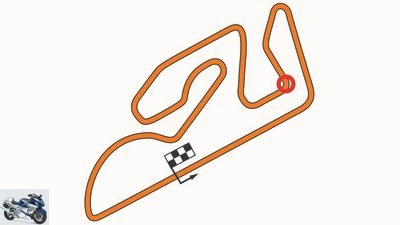
BILLION
14/22
The race track in Valencia lands in 10th place. “Sure – cold tires. That curve is notorious, what a shit this thing! Even today I conscientiously warm up the tires for two whole laps in Valencia before I really throw the box in there. The track slopes down a bit, so the balance has to be very good so that everything works perfectly there.”
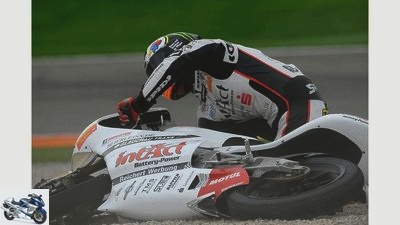
2snap
15/22
Sandro Cortese 2011 in Valencia in turn 4.
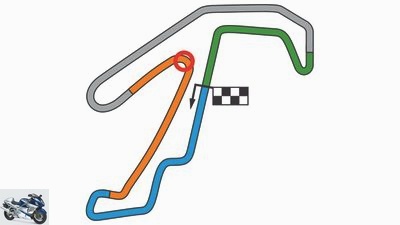
BILLION
16/22
The Misano racetrack finished in 9th place. “You have such a big-assed motorcycle and you try to slow it down for such a narrow-assed corner. You screw it up by a few centimeters and still think: it will work, just has to work, I don’t want to waste any time here. Next thing happening: you slide on your ass. It is simply the case there that you make a tiny mistake and still don’t want to give in.”
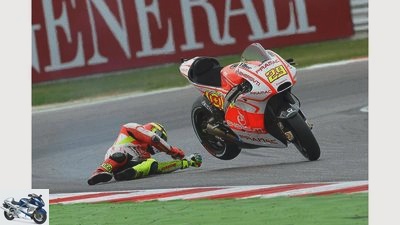
2snap
17/22
Andrea Iannone with the Ducati in Misano.
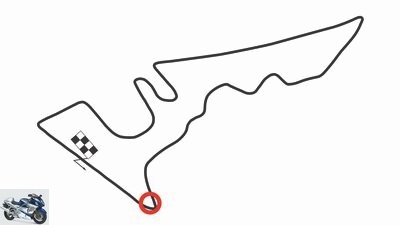
BILLION
18/22
The Austin racetrack took 8th place. “It’s difficult and hanging. You drive in full over the front wheel and feel good about it, but then the track runs away from you. The brake pressure should be removed a little earlier than normal, because if you relieve the front a little too late, it goes away.”
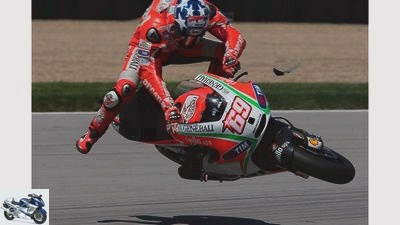
2snap
19/22
Nicky Hayden at the rodeo in the USA.
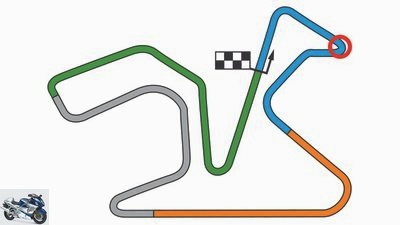
BILLION
20/22
The 7th place was taken by the Jerez race track. “She got me. After the first bend you come down over this slight knoll into the Michelin. There you can drive through with a lot of pressure on the front wheel, you can get through there with murder yourself, but if you push just a little more, the bike is gone. When you feel the powerful pressure on the tires, it just feels sensational, but when it gives way, you have no chance – in the Michelin it goes so damn fast.”
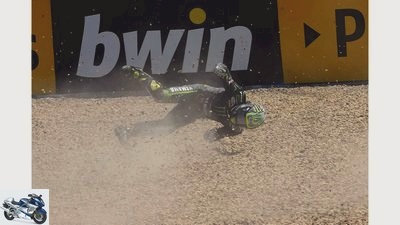
2snap
21/22
Cal Crutchlow had to hit the gravel in Jerez in 2012.
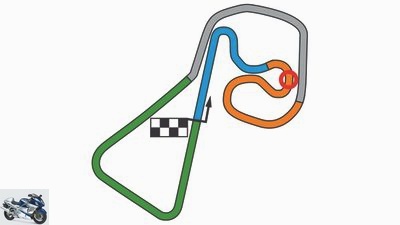
BILLION
22/22
The Sachsenring came in third. “Cold tires, man! Down Turn 3 you put a lot of weight on the front of the motorcycle, and it’s like being at the bottom of a bowl. You use the cornering speed and the deep lean angle that sometimes the exhaust drags there. Curve 1 is hanging, so be careful! If you lose your grip there, you fly.”
counselor
technology & future
Airbag compulsory in MotoGP from 2018
More security in the Moto GP
Airbag compulsory from 2018
From 2018, the riders of all three classes of the motorcycle world championship are obliged to ride with airbag systems. The FIM has now announced that.
Uli Baumann
11/01/2018
In order to further increase the safety for the drivers in the MotoGP World Championship, the FIM announced on Thursday (11.1.2018) that airbags are mandatory for all drivers in the MotoGP, Moto2 and Moto3 classes. The airbag systems must be worn in all sessions and must always be functional. The airbag systems must at least protect the shoulders and collarbones; back protection is optional. If this is installed, it must cover the entire backbone. Adjustments to the respective driver sizes are allowed. The airbag systems must act completely independently of the motorcycle and must not be in any connection with the bike.
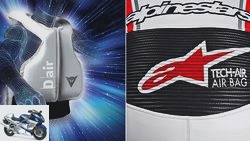
technology & future
Dainese versus Alpinestars
Patent dispute over airbag systems
read more
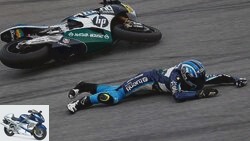
Sports & scene
Top 10 toughest corners in MotoGP
The devil’s MotoGP guide
read more
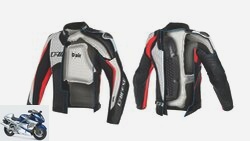
clothing
Protective equipment for motorcyclists
Protectors, airbags, scarves
read more
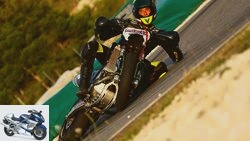
workshop
Basic tips to avoid falls
Remain seated!
read more
The FIM allows only a few exceptions: Wildcard drivers are allowed on the slopes even without an airbag, substitute drivers only for the first two missions. From the third use on, they are only allowed on the track with fully-fledged airbag systems.
Manufacturers must use their own documentation to prove that their airbag systems conform to the rules and comply with all applicable standards. All test reports of the systems must also be submitted to the FIM.
The new airbag requirement is also likely to be a major challenge for the estate car manufacturers. Dainese and Alpinestars are pioneers when it comes to airbag systems, but many pilots in the MotoGP field use suits from other manufacturers. They now have to develop or buy appropriate systems.
Related articles
-
Top 10 toughest corners in MotoGP
2snap 22nd pictures 2snap 1/22 Last season there were 863 falls in all three GP classes. This is the lowest value since 2010 – but it still means a lot…
-
MotoGP Mugello 2018 Race Report Grid Girls
2snap 22nd pictures 2snap 1/22 Also on site at the MotoGP race in Mugello: pretty grid girls from the beverage manufacturer Monster Energy. 2snap 2/22…
-
Motorsport Grid Girls MotoGP Superbike World Championship IDM 2018
2snap 72 pictures Eisele 1/72 We would like to start with three pretty ladies from the IDM. These recordings were made during the race in Schleiz. 2snap…
-
Commentary MotoGP Argentina 2018
2snap 5 pictures 2snap 1/5 Without an umbrella, nothing went at the Argentina Grand Prix. 2snap 2/5 Cal Crutchlow secured victory after an extremely…
-
MotoGP 2018 at Silverstone (England) – race canceled
2snap Sports & scene Motorsport MotoGP 2018 at Silverstone (England) – race canceled MotoGP 2018 at Silverstone (England) – race canceled MotoGP race…
-
2snap Sports & scene Motorsport MotoGP 2018 in Valencia Spain MotoGP 2018 in Valencia (Spain) Race in Valencia: Ducati with crowning season finale In an…
-
2snap Sports & scene Motorsport MotoGP 2018 Buriram Thailand MotoGP 2018 in Buriram (Thailand) Marquez wins in Buriram After an exciting duel with Andrea…
-
Market overview 2018 – Airbag clothing for motorcyclists
Alpinestars 35 pictures Alpinestars 1/35 Alpinestars Viper Tech-Air prices: 399.95 euros plus Street Air vest 1199.95 euros. Alpinestars 2/35 Alpinestars…
-
What matters when it comes to MotoGP brakes
PSP / LukaszSwiderek 12th pictures 2snap 1/12 2snap 2/12 The rear brake is hardly required for decelerating. However, it often functions as a…
-
MotoGP 2021 race calendar: recent changes
ADAC Sports & scene Motorsport MotoGP 2021 race calendar: recent changes MotoGP racing calendar 2021 Australia canceled, Portugal replaced The corona…